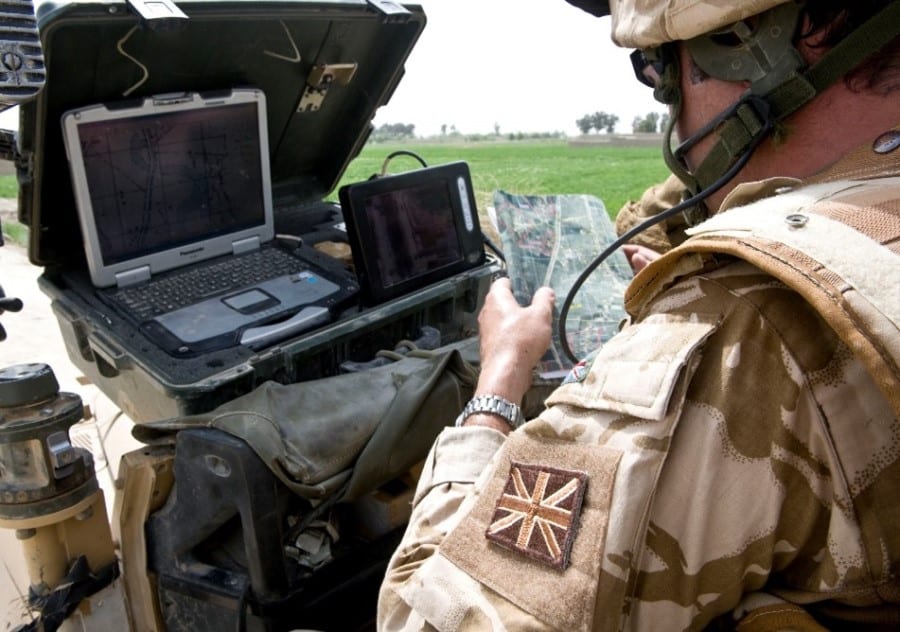Notizie per Categorie
Articoli Recenti
- Explore practical best practices to secure your data with Microsoft Purview 25 Aprile 2025
- New whitepaper outlines the taxonomy of failure modes in AI agents 24 Aprile 2025
- Understanding the threat landscape for Kubernetes and containerized assets 23 Aprile 2025
- [Launched] Generally Available: Instance Mix for Virtual Machine Scale Sets 22 Aprile 2025
- Microsoft’s AI vision shines at MWC 2025 in Barcelona 22 Aprile 2025
- [Launched] Generally Available: Announcing the Next generation Azure Data Box Devices 22 Aprile 2025
- [Launched] Generally Available: Cross-Region Data Transfer Capability in Azure Data Box Devices 21 Aprile 2025
- [Launched] Generally Available: Azure Ultra Disk Storage is now available in Spain Central 21 Aprile 2025
- [Launched] Generally Available: Azure Firewall resource specific log tables get Azure Monitor Basic plan support 21 Aprile 2025
- Hannover Messe 2025: Microsoft puts industrial AI to work 21 Aprile 2025
Enhance command and control with AI and machine learning
The rapidly evolving use of commercial technologies in the operating environment, as evidenced most recently by the conflict in Ukraine, has made it clear—militaries that leverage the vast capabilities of cloud-enabled technology benefit from distinct advantages in command and control, as well as mission outcomes.
Now more than ever software-centric technologies, like AI and machine learning, are enabling the processing of a vast array of data across the defense continuum. These technologies are elevating data to insights, and helping to inform decision-making to support mission operations and personnel across the defense landscape—from headquarters (HQ) to the tactical level.
Let’s explore a few ways defense and intelligence organizations are using cloud technologies to help enhance command and control and gain advantages to make better decisions ahead of their adversaries.
Strategic perspective: HQ applications
The modern operating environment is complex for commanders and staff at both the operational and strategic levels. The use of AI-enabled technology can significantly enhance strategic decision-making and coordination across all domains—land, air, sea, space, and cyberspace. In doing so, both commanders and staff can gain valuable insights and enable decision advantage at speed and scale.
AI-enhanced domain awareness
AI models can help integrate data from various sources—including disparate sensors, open sources, and intelligence reports—to provide a comprehensive situational awareness picture. By rapidly processing, fusing, and analyzing this data, AI can identify relevant information, detect patterns and anomalies, and generate actionable insight for commanders and staff. AI can help staff identify trends, forecast potential outcomes, and assess potential risks. They can then leverage these predictive analytics to anticipate threats, optimize resource allocation, and plan effective courses of action across one or more domains for command consideration.
Moreover, AI-powered decision support systems can assist in evaluating complex scenarios. They can help assess the impact of different options, recommend optimal courses of action, and consider factors like mission objectives, available assets, and potential risks—helping commanders make more effective and timely decisions.
AI can also automate coordination and communication processes across jurisdictions and domains by analyzing operational parameters, resource availability, and mission requirements. This can then help optimize the allocation of forces, logistics, and intelligence assets, and facilitate streamlining and facilitating more effective decision-making.
Finally, natural language processing enables HQ staff to interact with systems using natural, native language (English or otherwise) to access information more intuitively. Voice-activated interfaces and text-based chatbots can facilitate real-time information retrieval, status updates, and command inquiries, allowing for more efficient and seamless communication within the headquarters.
Automated operations centers
Operations centers in HQ environments can also be automated in new ways with AI to streamline processes, optimize resource management, and provide insights for decision-making. Using AI, a modern operations center can integrate various systems, sensors, communication networks, databases, and analytical tools into a unified platform. AI algorithms continuously collect, analyze, and process this data, providing real-time situational awareness to staff.
Through data fusion and advanced analytics, the automated operations center can identify patterns, anomalies, and potential threats, and generate actionable intelligence, alerts, and reports. This empowers staff to provide better recommendations to commanders for their consideration. By employing machine learning algorithms, the operations center can better predict outcomes, assess risks, and optimize resource allocation and readiness.
Finally, routine tasks—such as data collection, processing, and reporting—can be automated, freeing up personnel to focus on more advanced staff planning and other critical tasks. This transformative approach helps automate the operations center, providing a centralized platform for sharing information, collaborating on planning and operations, and monitoring ongoing activities—in sum, facilitating better command and staff engagement and decision-making.
Tactical perspective: Frontline applications

Given the growth in digital capabilities over the last two decades, the modern frontline soldier’s operational environment has changed significantly. This new data and technology-rich environment can bring its own set of challenges for soldiers. Modern military environments require soldiers to analyze disinformation campaigns, triage cyber warfare, and employ integrated tactics to thwart adversaries. Underpinning all of this is the ever-increasing quantity of data the soldier generates, consumes, and utilizes for decision-making.
A soldier’s ability to achieve and maintain decision advantage comes down to how they can harness vast amounts of data, without negatively impacting their ability to operate. Cognitive assistance technologies like virtual agents have been used for some time for basic tasks, but their impact has been narrow and at times a nuisance. The question has been: how do we provide systems that can do hard computational tasks while providing a convenient, robust, and accessible interface on the battlefield?
Soldier-centric AI opportunities
Recent advancements in natural language as an interface to systems and data have presented an opportunity to enhance the usability between soldiers and systems. Providing soldiers with a broad context and access to data via natural language prompts can dramatically change the way data is accessed on the battlefield. This enables frontline soldiers to utilize a broad range of assets available to create an operational advantage between themselves and their opposition. This can include interaction with data feeds from disparate assets, human-machine teaming, and automated safety and security in critical scenarios.
Tactical comms transcription and analysis
Most decision advantages for a soldier are based on the direct interface with systems and technologies. But the highest impact can be derived from modern technologies that can operate in the background, providing services that don’t require soldier interaction or cognitive load. Clear examples include technologies like passive translation, transcription, classification, and alerting of military radio chatter.
Operating in the background, a soldier can playback, hear, and read multiple language translations when required. Alerting can provide cognitive focus when critical safety situations emerge, like casualty evacuations or contact reporting on radio chatter. Operating passively with the radio network, these capabilities ensure technology does not impact the soldier unless needed, freeing cognitive load for decision-making.
Partnering to enhance command and control from HQ to the frontlines
Modern computing—centered on cloud technologies—provides the ability to build, evolve, and maintain decision advantage. Microsoft enables militaries around the world to employ the vast capabilities of cloud-enabled technology and maximize the use of their data assets. In doing so, military agencies gain distinct advantages in operational environments, from the command center all the way to the front-line soldier. This provides commanders with the ability to not only achieve but maintain decision advantage.
Optimize with Microsoft
To learn more about how defense organizations can optimize decision advantage using Microsoft tools and technology, check out our “Day in a life” video series, or listen to our recent conversation “Technology Trends and Decision Advantage in Defense” with retired Vice Admiral Ann E. Rondeau, President of the Naval Postgraduate School.
Microsoft is committed to the advancement of AI driven by ethical principles that put people first. Learn more about our commitment to Responsible AI principles from Microsoft.

Microsoft for Defense and Intelligence
Empowering militaries. Improving operations. Protecting national security.
The post Enhance command and control with AI and machine learning appeared first on Microsoft Industry Blogs.
Source: Microsoft Industry Blog
